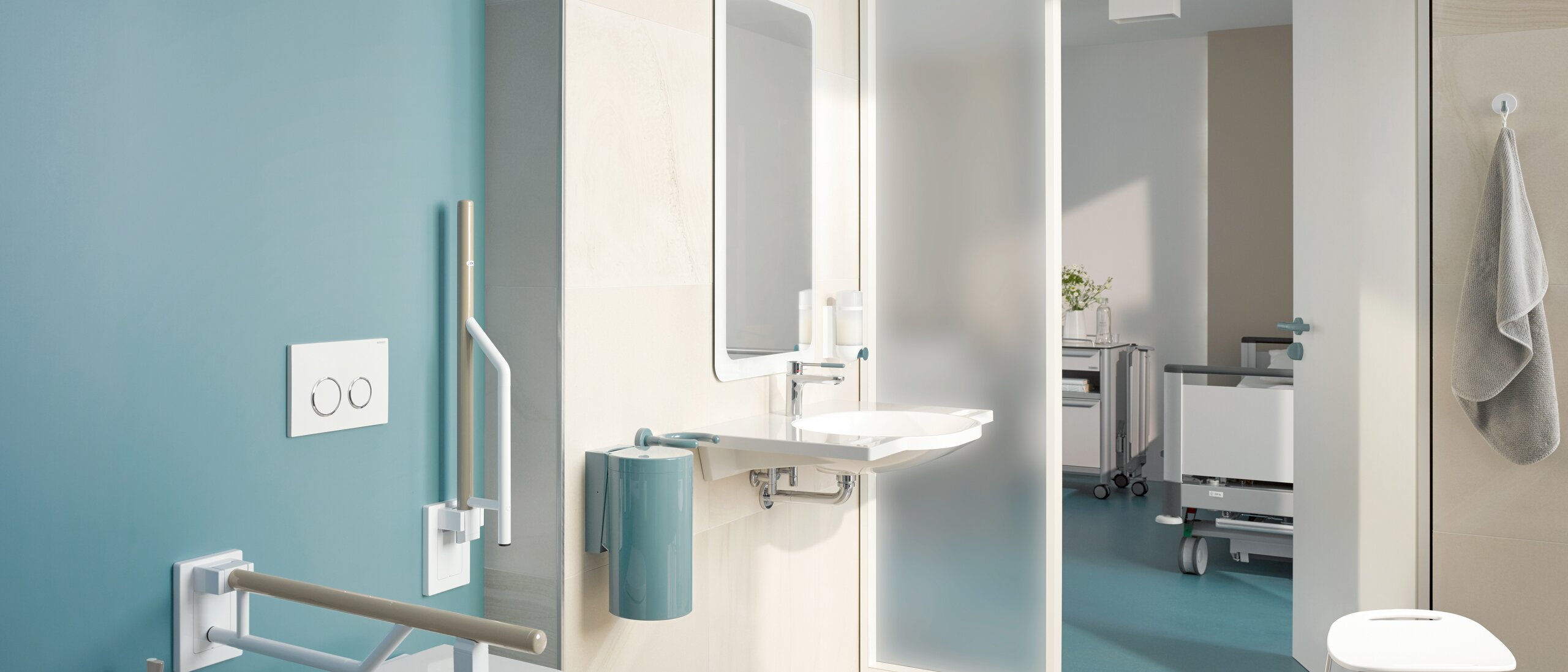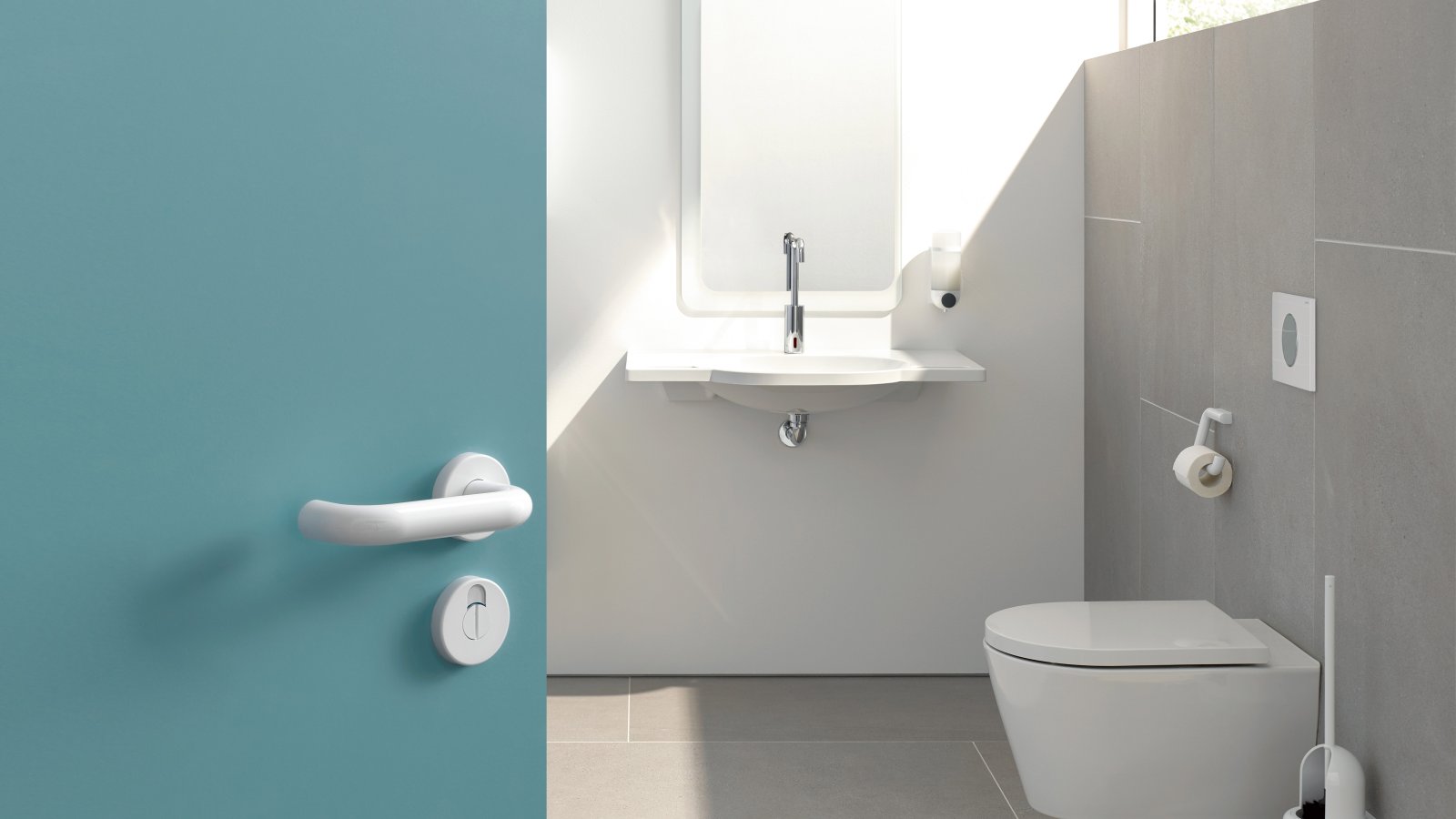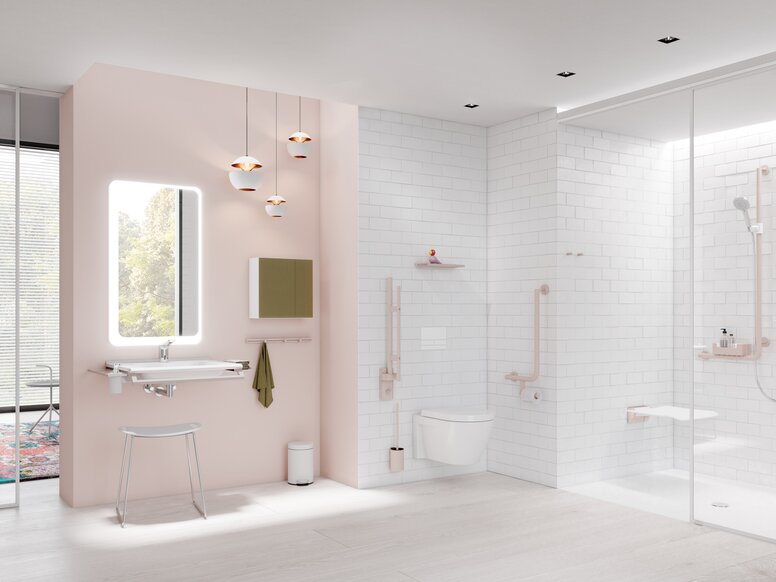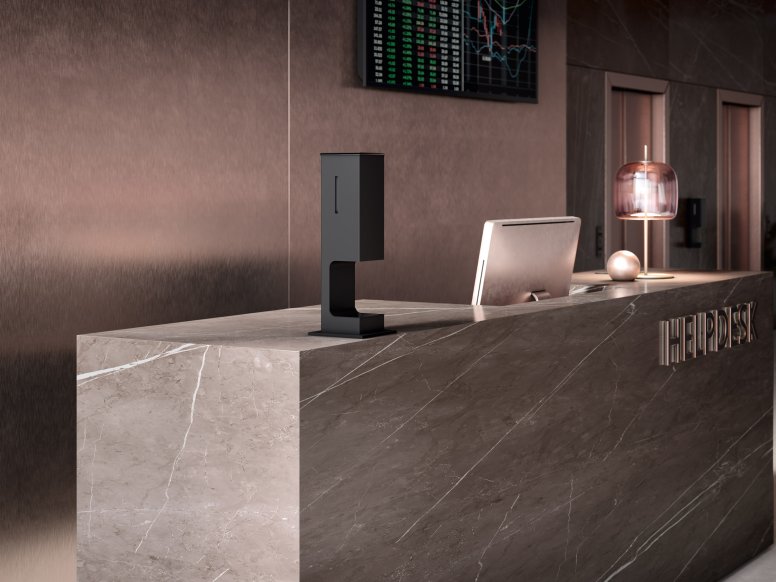HEWI MAG / Knowledge
Requirements for the bathroom door in the patient bathroom
Doors in the healthcare sector
Whether in a nursing home, rehabilitation clinic or hospital, the products used there must be functional, made of high-quality materials and withstand permanent stress. Short distances, wide corridors and doors are indispensable in an emergency to ensure medical care for patients. It is therefore not surprising that users place special demands on the bathroom door in the patient's bathroom. We'll tell you more about it in this post.
Basically, there are a few aspects to consider regarding the bathroom door in the patient's bathroom. These include, for example, the possible risk of collision with other doors in the patient's room. At this point, you as the planner or architect should check whether the use of a sliding door is advisable. Also possible, for example, would be a so-called turn-fold door. A bend in the door surface can solve the problem of space in the hallway of the room. It is also important that doors open to the outside. Hinged doors shall not open into the sanitary rooms. This allows you to avoid blocking the door from the inside. It must be possible to unlock the bathroom door from the outside. The use of a WC fitting is recommended, you should avoid lock cylinders. In addition, there are the DIN specifications regarding the accessibility of the door: it requires at least 90 cm clear door passage width and at least 205 cm clear door passage height. Lower door stops as well as thresholds are not permitted. There must be sufficient space for movement in front of the door.
Bathroom door: material used is crucial
Many doors are made of wood. However, if these interior doors are exposed to permanent moisture, door leaves may warp or coatings (such as paint) may peel off. Once damage has occurred, the material underneath is much more susceptible to moisture. Especially the bottom edge of the door leaf is very sensitive. If it is not adequately sealed, it can swell. This may prevent the bathroom door from opening or closing. At worst, the moisture can continue to move upwards. In the case of a wooden door, this leads to further damage.
Differentiation between wet and damp room
Therefore, it is advisable to rely on the use of special doors during the planning stage. The industry differentiates between damp room and wet room doors. While high humidity of up to 100 percent only occurs for a very short time in damp rooms, there is permanent and long-lasting high humidity in a wet room. In addition, the door is often exposed to splashing water. Damp room doors are therefore suitable for use in hospitals, nursing homes, hotels and in the home. Wet room doors, on the other hand, are used mainly in public shower rooms (swimming pools, saunas). These must be resistant to aggressive cleaning agents. As a general rule, doors should be highly water resistant.
WHAT IS THE STATE OF HYGIENE IN GERMANY?
What is the state of hygiene in the care, public, hotel and education sectors? These and many other questions are answered in the new, free e-book from HEWI. Feel free to download the e-book here free of charge.
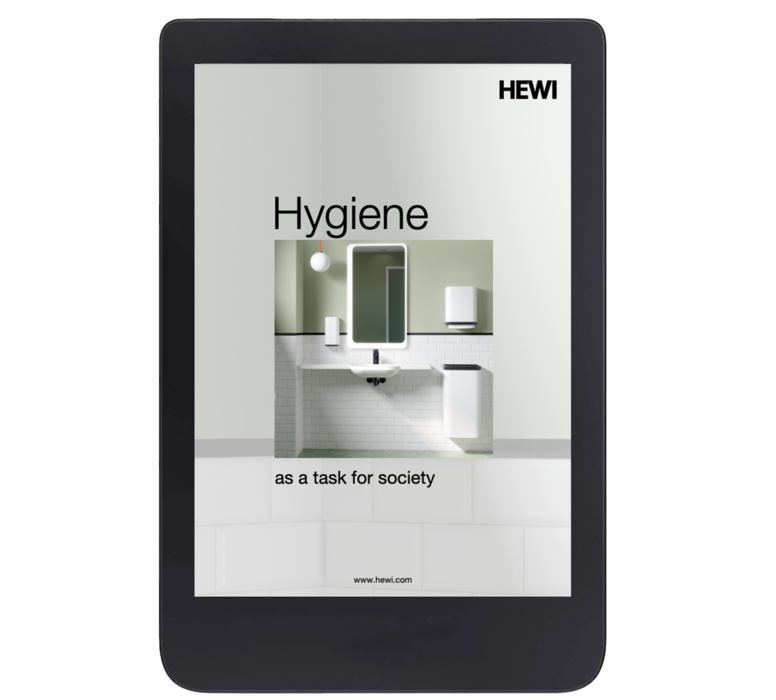
The right lever handle for the bathroom door
U-shape: The U-shape is ergonomically rounded and has a continuous steel core. An example of a U-shaped lever handle can be found at HEWI with the design classic System 111. The design language of this lever handle is reduced to the essentials - it is puristic and timeless. Even more than 50 years after its creation, System 111 accompanies many people in their everyday lives. The advantage of this form is that clothes (DIN 18040) can not involuntarily get caught in it. This minimizes the risk of injury.
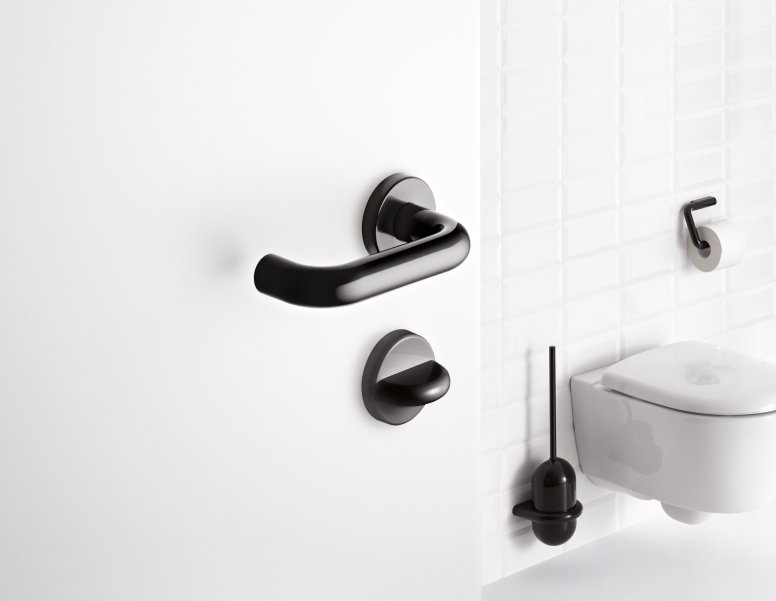
Lever handle made of through-dyed polyamide: The System 111 lever handle is also available in polyamide in addition to a stainless steel variant Matt. The latter is available in a high-gloss or matte finish. Thus, for example, the door handle can also be combined to match the door frame. Coordinated, color product combinations around the door with hinge and frame comply with DIN 18040. Because: Doors must be clearly perceptible, including for people who have visual impairments.
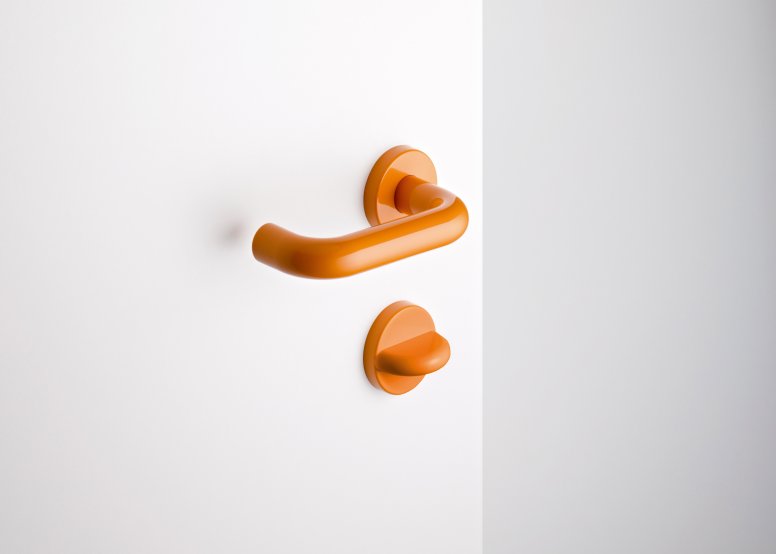
Stainless steel lever handle: With this lever handle model, users benefit from an extended handle and a WC lock that also has an extended lever. This is the model 112X. The shape of the handle allows easy operation, even of heavy doors, thanks to a lever action. This is especially helpful for physically impaired persons as well as for hospital staff.
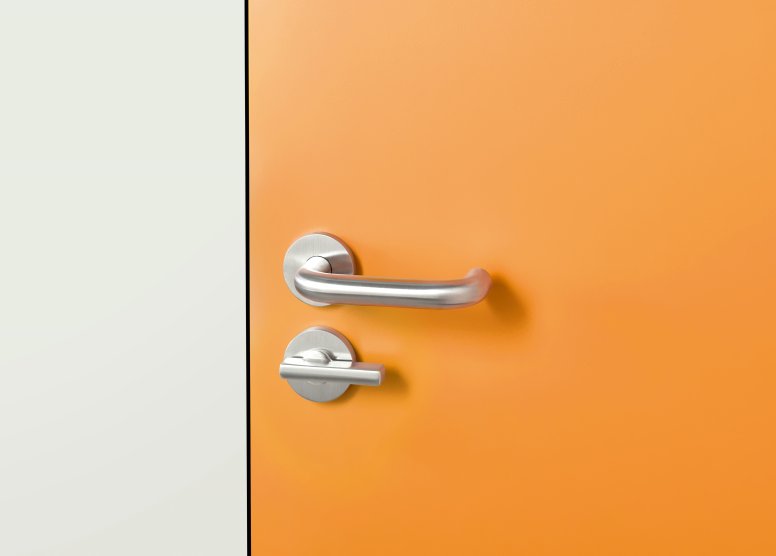
Elbow door handle: Another way to use a door handle and open bathroom doors are those that can be opened with elbows. An example of this is the model 115 from HEWI. It can be easily operated with the elbow without risk of injury. In addition, this also ensures hygiene in the hospital, as bacteria or viruses from the hand do not reach the door handle.
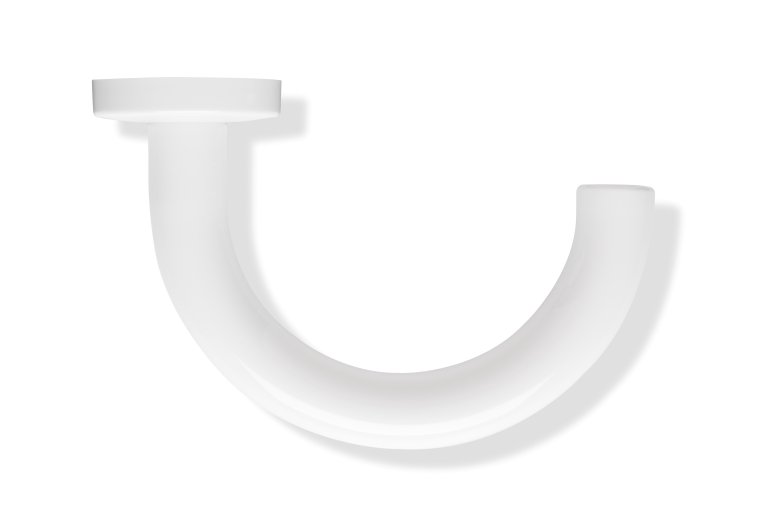
Handle for the sliding door: For the sliding door handles are available as round tube, U-shaped or ergonomically rounded. The height of the handles can be varied - in keeping with the principle of accessibility. The leverage effect allows users to open even heavy doors easily. Likewise, an operation with the elbow is possible - completely in the sense of hygiene. Different materials are possible here: The lever handle is optionally made of through-dyed polyamide, in a glossy or matte finish, or of stainless steel.
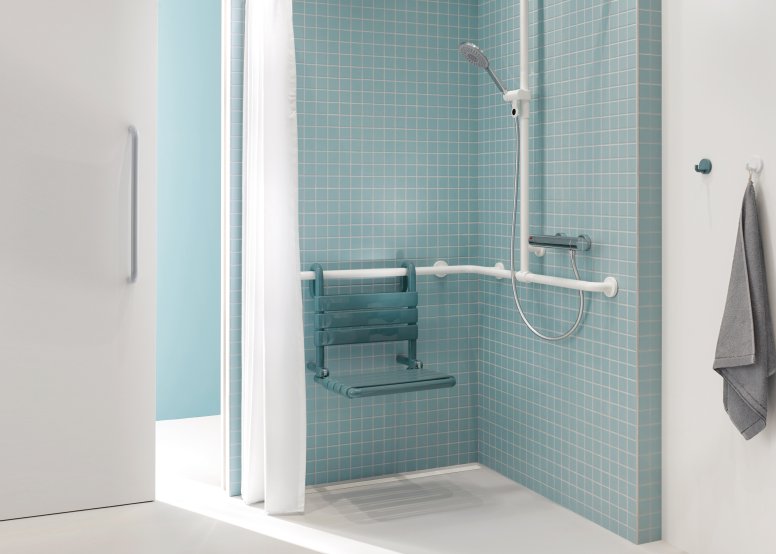
For more information on what to consider regarding accessibility and lever handles, see our article "Accessible lever handles".
